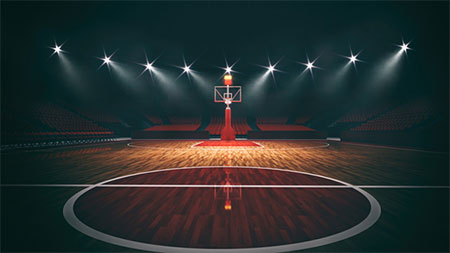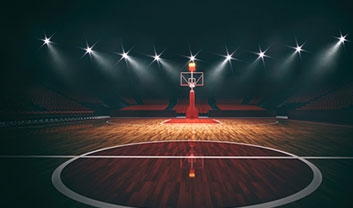
Almost 17 million people watched the NCAA March Madness championship game last year.1 The skill and passion of these basketball players is a thrill to watch throughout the season.
Due to the repetitive jumping, twisting, falls, and cutting movements that are part of the sport, knee and shoulder injuries can be a common occurrence in basketball at any level.
Some common basketball injuries include:
- Meniscal tear: The meniscus is the cartilage that lies between the shinbone and the thighbone. It acts as a shock absorber for the joint. The meniscus can be injured by a traumatic twisting movement of the knee joint.
- ACL tear: An ACL tear is a common traumatic injury in athletes, particularly basketball players. The ACL (anterior cruciate ligament) can be injured when making quick changes in direction or landing incorrectly from a jump. Female athletes are 2 to 7 times more likely than male athletes to experience an ACL tear in basketball.2
- PCL tear: Another ligament susceptible to injury in basketball is the PCL (posterior cruciate ligament). This ligament runs along the back of the knee and connects the shinbone to the thighbone. It may be injured by a direct blow to the front of the knee or from hyperextension of the knee.
- Rotator Cuff Tear: A rotator cuff tear occurs when the tendon tears away from the bone. These tendons cover the head of the humerus and help you to raise and rotate your arm. A rotator cuff tear will weaken the shoulder, making normal activities painful and difficult to do. In basketball, this injury is usually associated with a fall on an outstretched arm.
- Shoulder Instability/Dislocation: Shoulder instability happens when the head of the humerus is forcefully moved out of the shoulder socket and the ligaments become stretched, torn or detached, allowing the ball of the shoulder joint to move completely or partially out of the socket. This typically happens as a result of a sudden injury, such as a fall or accident. Once a shoulder has dislocated, it becomes vulnerable to repeat episodes.
- Increase strengthening: Working out in the gym to strengthen the muscles is the greatest line of defense. Leg extensions, hamstring curls, and partial squats are all excellent for knee protection. Child’s pose, arm circles with weights, and the standing row exercise can add strength for your shoulder.
- Use Proper Equipment: Wear well-fitting shoes and use protective gear such as ankle supports and knee braces when needed.
- Warmup and cool down: Prior to a game, spend a few minutes doing some light activity to warm up stiff muscles and joints. Stretching after a game can help ease sore muscles.
- Rest your muscles: Getting enough rest between games is the key to avoiding overuse injuries. A mild soreness in your muscles and joints may be present after a game, but if the condition continues to worsen with every game, you may need a couple of days or weeks off to allow your muscles to recover.
Although severe knee and shoulder injuries are not as prevalent in basketball as compared to other high contact sports, the following tips can help prevent injury on the court.
Basketball is a fast-paced, exciting sport to play and watch. Be aware of common injuries within the game and practice these tips to help prevent injury and enjoy the sport all season long.
Dr. Kai Mithoefer is board certified in both Orthopedic surgery and Orthopedic sports medicine and is a fellowship trained knee and shoulder specialist. Dr. Mithoefer has published more than 100 scientific articles and book chapters and is a frequent speaker at national and international orthopedic meetings.
1www.statista.com/statistics/244249/ncaa-basketball-march-madness-average-audience-per-game/











